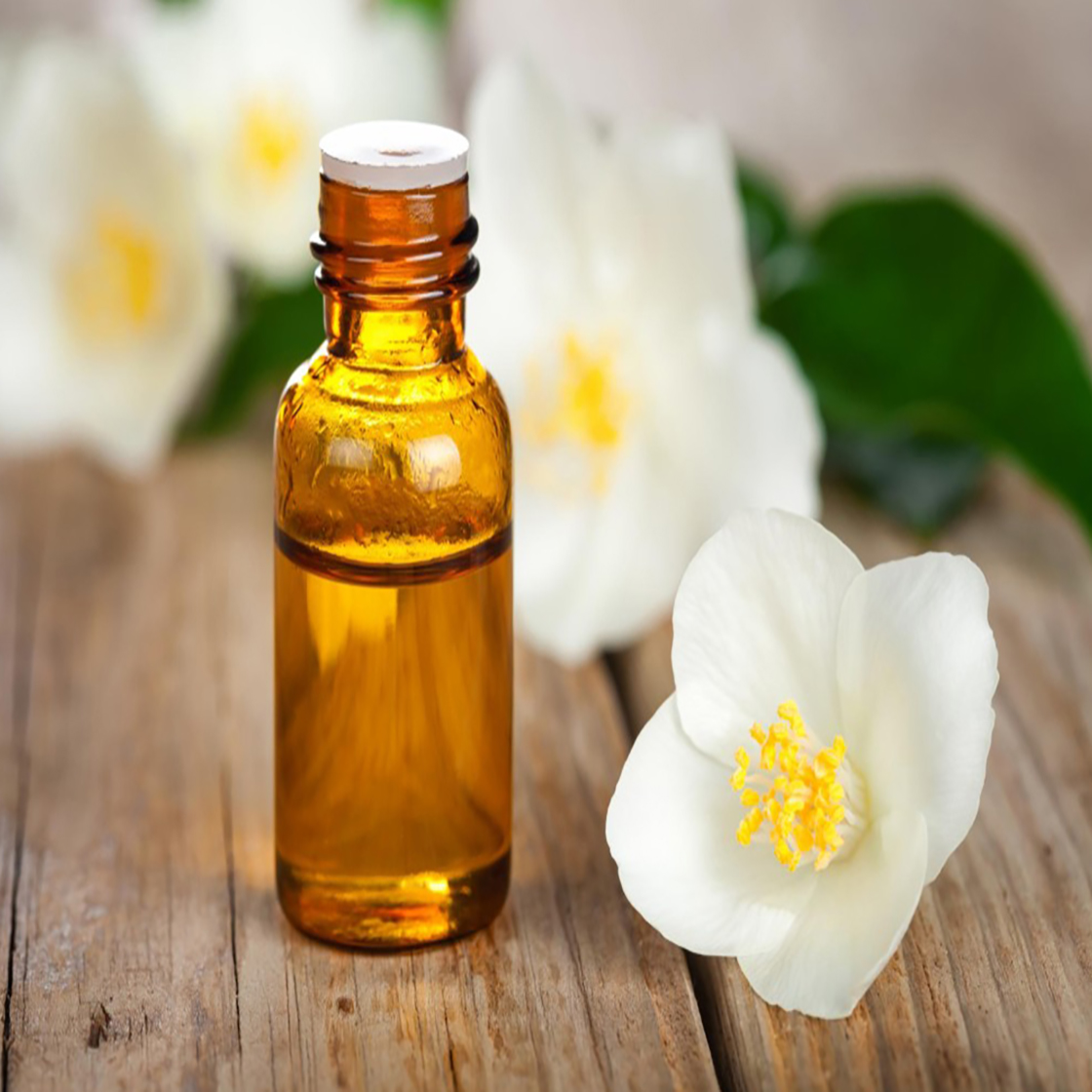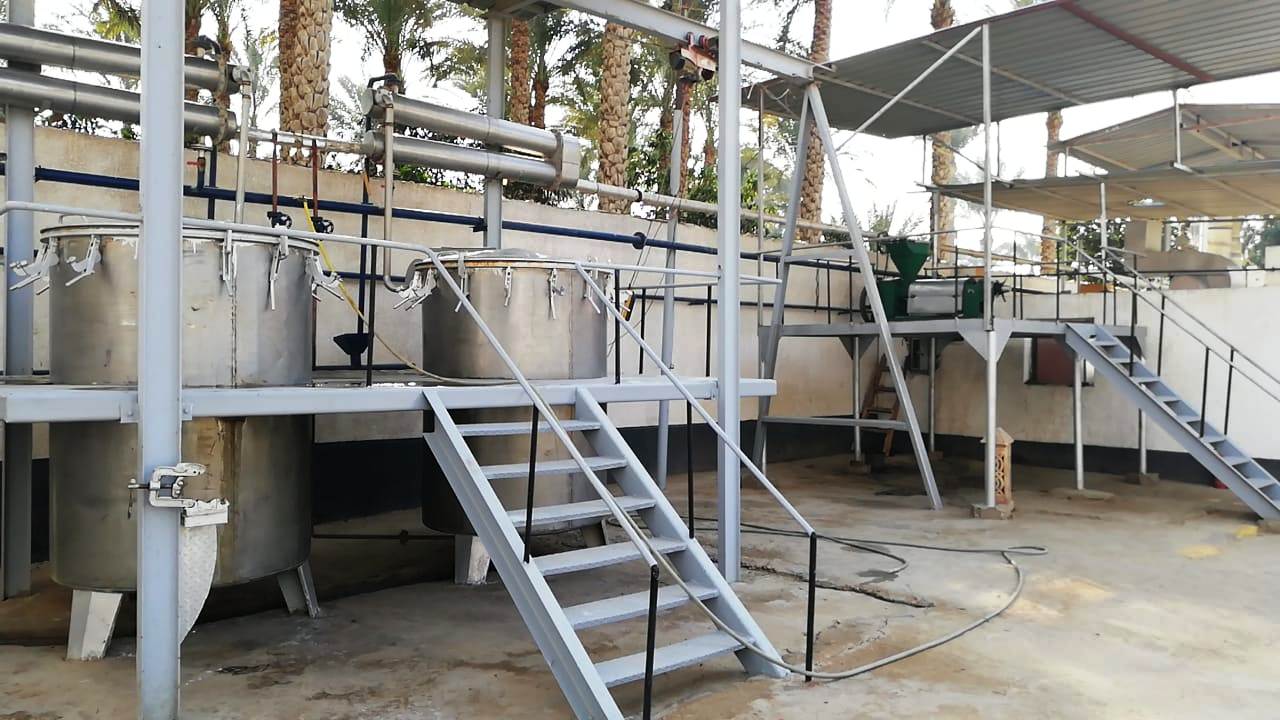Jasmine Jasminum officinale Absolute Oil
Login to view prices
Common name: Jasmine
Latin name: Jasminum officinale L.
Family: Oleaceae
Other names: Arab.: Yasmin or Ysmyn (Origin of Jasmine name); Engl.:Common White Jasmine, Poet's Jasmine, Persian: Jessamine, Sp.: jazmin China: Yeh Hsi Ming Botan.: Jasminum grandiflorum, Jasminum officinale var. grandiflorum.
Two types of jasmine are used for the extraction of oil. Some botanists describe them as two distinct species: J. grandiflorum and J. officinale, while others consider J. grandiflorum to be a variety of officinale. The oil of the two flowers is virtually identical.
Poet's jasmine: (White Jasmine) Jasminum officinale L.
Royal jasmine: (Catalonian and Spanish jasmine) Jasminum grandiflorum L.
Botanical Origin:
Common name: Jasmine
Latin name: Jasminum officinale L.
Family: Oleaceae
Other names: Arab.: Yasmin or Ysmyn (Origin of Jasmine name); Engl.:Common White Jasmine, Poet’s Jasmine, Persian: Jessamine, Sp.: jazmin China: Yeh Hsi Ming Botan.: Jasminum grandiflorum, Jasminum officinale var. grandiflorum.
Two types of jasmine are used for the extraction of oil. Some botanists describe them as two distinct species: J. grandiflorum and J. officinale, while others consider J. grandiflorum to be a variety of officinale. The oil of the two flowers is virtually identical.
Poet’s jasmine: (White Jasmine) Jasminum officinale L.
Royal jasmine: (Catalonian and Spanish jasmine) Jasminum grandiflorum L.
Description:
A tall-climbing semi-evergreen Asian shrub (J. officinale) with fragrant white flowers from which oil is extracted for use in perfumes
A vine-like, climbing bush, jasmine may reach up to 40 feet in height (20 meters), and up to 10 feet in width. Leaves are thick, shiny, pointed, mostly ternate or pinnate, and have leaflets in 3 pairs, to 2½ inches (6.5 centimeters) long. It blooms from June to October. Fragrance increases in intensity throughout the night, climaxing at around two a.m.
The flowers, usually white or yellow, with a tubular, five- or eight-cleft calyx, a cylindrical corolla-tube, with a spreading limb, two stamens enclosed in the corolla-tube and a two-celled ovary.
Royal jasmine, grows similarly to poet’s jasmine but has leaflets of a different size, shorter branches, and larger flowers.
Range & Habitat:
Egypt produces 80% of jasmine’s global yield.
Perennial. Soil temperature: 70° to 75°F (21° to 24°C) The perennial jasmine plants that grow outside in warm regions are grown inside as greenhouse plants in northern climates. Soil should be with an annual precipitation of 0.3 to 2.8 meters and a soil pH of 4.9 to 8.3. Soil may be rich, light, sandy, and well drained. The soil must remain moist, though fragrance is diminished by over-saturation. Generally, with the exception of soils that contain too much clay or gravel, any type of land may be used, provided it is irrigable, permeable, and well exposed to the sun.
Full sunlight is required. Can tolerate temperature extremes ranging from -10° to 0°F (23° to 17°C). Propagation through cuttings or layering. Prune in the fall, right after flowering. Deciduous in cooler climates.
Planting & Cultivation:
Prior to planting, the soil should be thoroughly cleaned of any old roots; if this is not done the jasmine plant will be attacked by fungi and root diseases, and the new planting may soon perish.
A jasmine field lasts from 10 to 15 years; on light, well-aired and well-drained soil the life-span may be much longer. After jasmine, crop rotation must be practiced, and years must pass before jasmine can again be grown on the same field.
In southern France jasmine is planted by grafting the Spanish jasmine(J. garndiflorum) on stocks of the wild growing J. officinale, which is a hardier plant, more resistant to frost and root diseases than the former. J. officinale stocks are planted in march, 10 cm. Apart, in rows 80 cm apart. Grating with J. garndiflorum is done in the second or third year. Every year the bushes are trimmed to keep them low and to facilitate harvesting of the flowers. One hectare usually comprises 100,000 to 150,000 stocks.
In Italy, because of the mild winters, especially in Sicily and Calabria, it is not necessary to graft the jasmine as in Southern France, and J. garndiflorum can be planted directly, by means of cuttings these are prepared in March and placed directly in the field. Or cuttings are grown in a nursery for a sufficiently long time to develop a strong root system. The young plants are then set out in the field during March of the following year. Prior to planting, the ground must be well prepared by hoeing to a depth of about 80 cm.
For fertilization, organic fertilizers enriched with chemicals are commonly employed. Usually the fields are irrigated once every week, from June to October.
In Egypt, the mildness of the winters excludes any damage by frost, so no grafting is necessary. The Nile provides ample irrigation through a well-organized system of canals and ditches. Propagation is effected by layering, which produces vigorous plants. The shrubs are planted 1 m apart, in rows 2 m. apart, one hectare containing about 5,000 plants. The individual bushes are permitted to grow much larger than in Southern France. Nevertheless they are trimmed every year, so that the flowers stay within reach of children who do the harvesting. Because of the heat prevailing during the months of the harvest, the picked flowers must be processed immediately after arrival in the extraction plant.
Harvesting and Preparing for the Market:
Depending upon the weather, the flowering season commences about July 20 and lasts until the beginning of November. During the first two weeks the yield of flowers is low; with normal weather it reaches its maximum between August 10 and October 20. the flowers collected in August are heavier (8,000 to 10,000 blossoms per kg) than those gathered in October (14,000 blossoms per kg.). Moreover, the August and September flowers contain substantially more perfume than the October flowers. Obviously, weather conditions also play an important role, warm weather and ample sunshine producing a much larger flower crop, and flowers with more perfume, than cool or rainy weather.
The flowers have to be picked early in the morning, because they contain a maximum of perfume at daybreak. After 10 o’clock the perfume seems to disappear. Flowers gathered at noon or in the afternoon yield much less flower oil than those collected very early in the day. The flowers have to be picked very carefully. A skilled woman or girl can collect up to 3 kg of flowers in 6 hr.
In the first year one hectare produces from 1,200 to 2,000 kg of flowers, in the second and in the following years from 3,000 to 4,000 kg. As the plantation becomes older, stocks die out in increasing number.
Methods of Extraction:
Jasmine represent the classic example of those flowers which, even after having been detached from the plant, continue developing and emitting their natural perfume, until they fade and deteriorate. The chief problem of oil extraction thus resolves itself into that of capturing the full amount of perfume which the flower contains at the moment of picking, plus the quantity emitted after picking. So the solution has been reached by the introduction of the enfleurage method but this method is the most delicate one, requiring a great deal of hand labor, which today renders the final extracts very costly, despite the relatively high yield of natural flower oil.
For this reason enfleurage has been replaced with extraction with volatile solvents particularly petroleum ether. This process yield concrete and absolute flower oils, which represent the perfume of the living flower in a truly remarkable way.
When comparing the yield of jasmine flower obtained by the process of enfleurage with that obtained by solvent extraction, it is necessary to use the volatile oils as bases of calculation. Based on that it was found that enfleurage from 2 to 2.5 times as much perfume as extraction with solvents.
Yield:
1,000 kg of jasmine flowers on extraction with petroleum ether, yield from 2.8 to 3.4 kg, in exceptional cases from 2.4 to 3.8 kg of concrete. Yields are varying from 0.28 and 0.30 %. In general the yield of concrete depends on several factors, among them:
- The weather.
- The month of the harvest. (Maximum in the second half of August and at the beginning of September).
- The hour at which the flowers have been picked. (Flowers picked from 6 to 10 A.M. yield twice as much flower oil as those collected in the afternoon or 1 to 1.5 as much flowers gathered at daybreak (the perfume of the latter, however, is finer).
Absolute:
On treatment with high-proof alcohol in the usual way, concrete of jasmine yields from 45 to 53 % of alcohol-soluble absolute.
Concretes prepared at the beginning of the flowering season give 53 to 55 %, while those prepared at the end of the season yield only 42 to 44% of absolute.
Volatile oil:
On direct steam or water distillation the jasmine flowers give such a low yield of oil that this process cannot be employed industrially. The yield of oil is about 0.07% from the weight of flowers, but 16 to 20% from the weight of concretes.
The volatile oils of jasmine referred to in literature are derived by distillation of the concretes or absolutes and serve chiefly for assaying the quality of a concrete or absolute.
[1] Source: Simon, J.E., A.F. Chadwick and L.E. Craker. 1984. Herbs: An Indexed Bibliography. 1971-1980. The Scientific Literatureon Selected Herbs, and Aromatic and Medicinal Plants of the TemperateZone. Archon Books, 770 pp., Hamden, CT. The Essential Oils. By Ernest Guenther. 1950
Notes:
- Usually concrete are prepared by extraction of the flowers with petroleum ether. Some manufacturers occasionally use benzene for this purpose, but the resulting concretes as well as absolutes are very dark colored, solid or viscous masses, with a “cooked” off-odor, reminiscent of marmalades.
- The absolute, on aging, darkens and usually becomes turbid, gradually separating a grayish deposit; the odor assumes a deeper tonality and the color changes to red.
- The production of high-grade concretes and absolutes of jasmine is not an easy matter. It requires a great deal of experience and many factors must be considered. To summerize, the quality of the finished flower oils depends upon the following:
- Geographical location. Flowers from higher altitudes seem to contain a finer perfume than those from the lower altitudes and plains.
- Weather conditions. During warm and sunny weather the flowers give better yield and quality of oil than during cloudy and particularly rainy weather.
- The season. During the height of the season (second half of August to middle or end of October) yield and quality of the flower oil is higher than at the beginning and at the end of the season.
Generally the flowers are picked during the second half of the year (from June till December), the best quality is from flowers picked at the above dates, the worst quality being from flowers picked at December.
- Time of harvest. Flowers picked in the morning up to 10 A.M. are far better quality (yield & perfume) than those collected at noon or in the afternoon. This is particularly important in hot countries, e.g. Egypt, Algeria, and Morocco.
- Speed of flower transport. No time should be lost in transporting the harvested flowers to the extraction plant, where they must be worked up immediately after arrival. This can only be done if the extractors have sufficiently large capacity to process all the flowers right after delivery, even during the height of the season. Many omissions are committed in this respect, and often the flowers are kept in heaps on the floor of the extraction plant for long hours. During this waiting period they exhale a great deal of their perfume, which is then simply lost. In addition, they start to fade and wither, yielding then flower oils of poor quality and low in indole content. In the hot climate of North Africa, it is most important to speed up delivery of the flower material and to process them without any loss of time. The flat note, which characterizes some of the concretes and absolutes from North Africa, is perhaps a result of neglect in this respect (not hurrying up to distillation).
- Process of extraction. Temperatures during the concentration of the extracts should be kept as low as possible. The solvent must be of highest purity and, on evaporation, leave not the slightest trace of a kerosene odor.
Adulteration & its Detection:
The oil is subject to much adulteration, especially with:
| Adulterant | Appropriate method for detection | Notes |
| Ethyl alcohol | Easily detected by GC | The total ethyl alcohol in the absolute should not exceed 1.5% |
Additional information
| Weight | N/A |
|---|---|
| Dimensions | N/A |
| Oil Purity | 100% Natural & Pure without any chemical, flavor, food additive or carrier. |
| Ship from | Egypt |
| Country of Origin | Egypt |
| Cultivation Type | Organic, Conventional |
| Oil Bulk Packaging | 1 Kg Aluminum Bottle, 5 Kg Aluminum Bottle |
| HS Code | 33013099 |
| CAS Number | 8022-96-6 |
| Oil Documentation Available | Allergen Free Certificate, Bovine Spongiform Encephalophathy (BSE) Certificate, Certificate of Analysis (COA), GMO Certificate, GRAS Status Statement, Halal Certificate, Herbal Origin Statement, KOSHER Certificate, Manufacturing Flow Chart, Material Safety Data Sheet (MSDS), Organic Certificate, Pesticide Residual Certificate, Researches & Studies, Technical Data Sheet (TDS), WADA Prohibited list Statement |
-
Login to view prices
-
Login to view prices
-
Login to view prices






